BMW 5 Series vs Mercedes E-Class
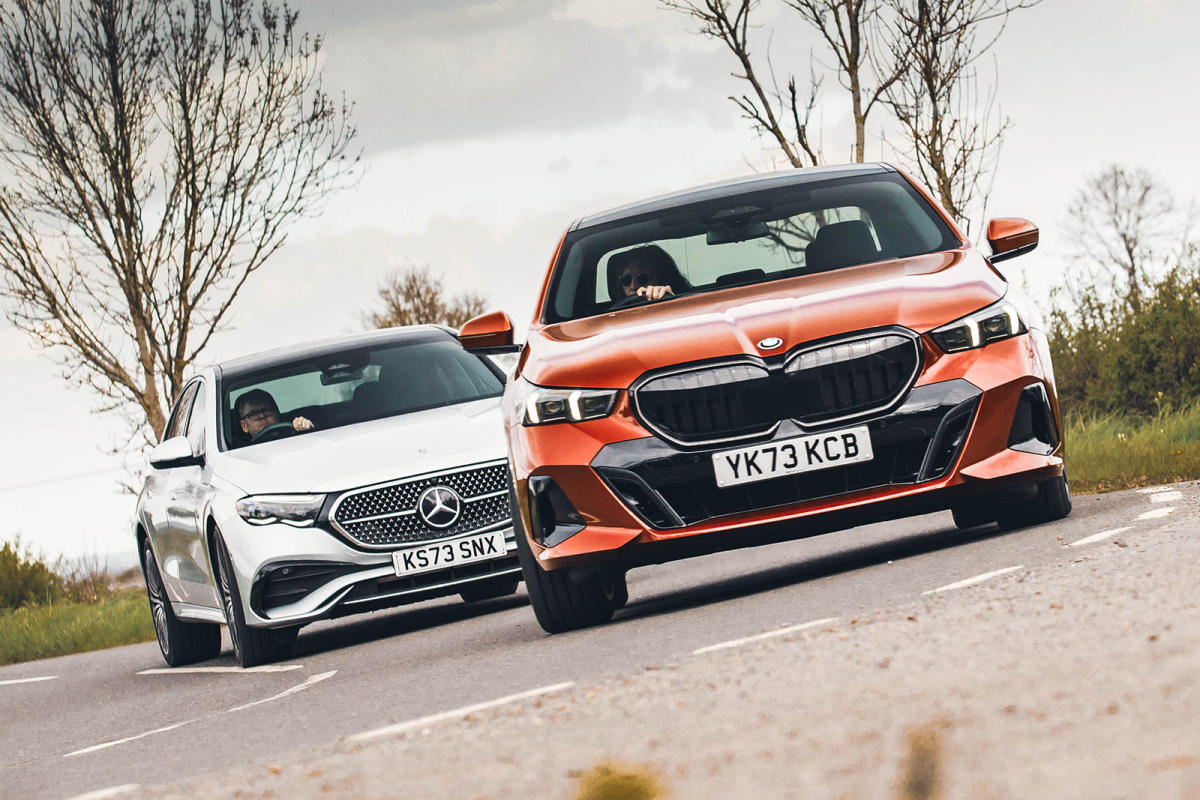

Both the 5 Series and the E-Class have been important players in Autocar’s history.
This comparison is something like a barometer for the automotive industry.
We’ve pitted the BMW 5 Series against the Mercedes-Benz E-Class many times – the earliest example I can find in the Autocar archives dates back to 1976, when they appeared as supporting characters in a test of the Rover SD1.
Different trends, car types, and entire automakers have come and gone, but this combination feels like a constant. It shows not only how cars have grown in size, but also the rate of inflation—like a fancier version of the Big Mac index (both are about ten times more expensive than they were in 1976).
More than anything, it reflects the preferred powertrain of the era. Our original rivals were fitted with straight-six petrol engines, but in the 2000s they switched to the big diesels that had been the standard choice for so long.
Today, BMW no longer offers diesel engines, as the UK’s combustion-only range has been reduced to a 2.0-litre petrol engine. The classic formula of a straight-six petrol engine, manual gearbox and rear-wheel drive seems like a distant dream.
You can complain about it all you want, but do you enjoy paying taxes? Probably not, and neither do drivers of upper-middle-class sedans. These are predominantly company cars, so people essentially “pick” the car they are entitled to under the current tax regime. And these days, that means either an electric car or a plug-in hybrid.
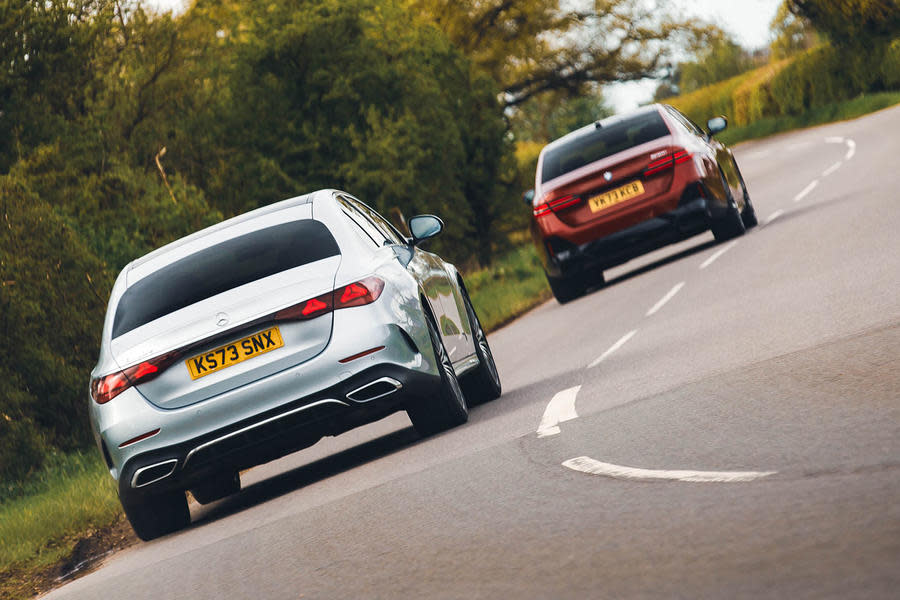

Presentation of the BMW 5 Series and the Mercedes E-Class
Quicklinks: Drives – Economic efficiency – Driving dynamics – Driving behaviour and handling – Interior – Conclusion – Specifications
So what we have here is the BMW530e and that Mercedes-Benz E300e.
They’re unrecognizable from their 1970s predecessors, but they still follow very similar formulas: A turbocharged 2.0-liter four-cylinder up front drives the rear wheels via a torque converter automatic that hides an electric motor producing about 150 horsepower. Hidden under the floor of the BMW and under the trunk of the Mercedes is a 20 kWh (or so) battery that allows for an electric range of more than 60 miles.
On paper, there’s not much difference between the two, but that doesn’t mean much: recently, some promising cars have failed on the ice of real-world driving and drivability tests.
BMW 5 Series vs. Mercedes E-Class: Powertrains
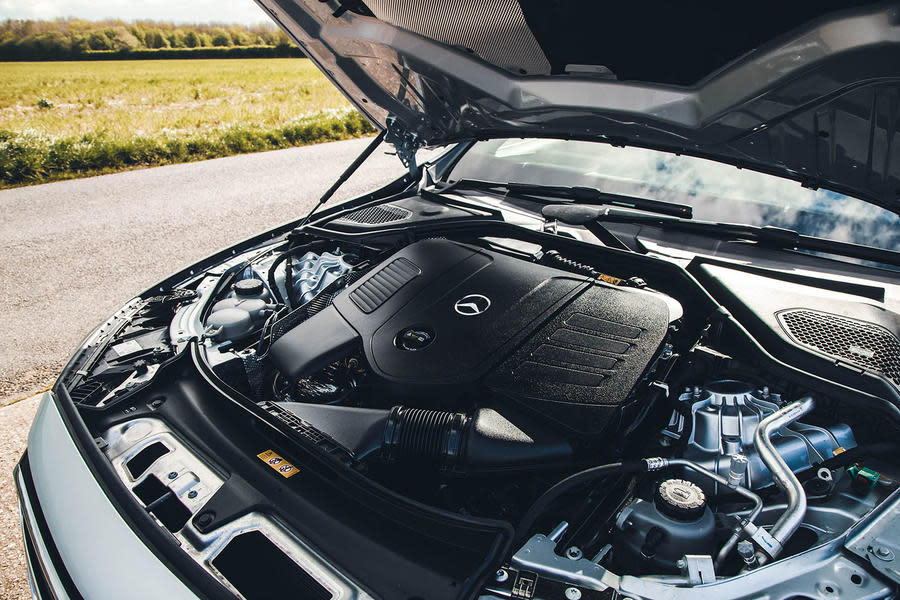

The Mercedes takes first place because its larger battery (19.5 kWh instead of 18.7 kWh) convinces the authorities that it can go further on a charge and therefore deserves a lower tax bill. In reality, however, it proved less efficient in electric mode than the BMW and the batteries of both cars were empty after 60 miles.
This figure still exceeds the figures of previous electric cars and could be enough for owners to cover almost all of their daily kilometers exclusively on electricity.
It seems like BMW has its electric cars a little better under control, because in EV mode the 530e is not only more efficient but also smarter than the E300e.
If you set off on a 200-mile drive with a full battery, the BMW will strategically use the electric power so that the battery is empty at the end, but it will keep some electric power for traffic jams and city driving. The Mercedes is designed to do the same, but in practice only uses its charge at the beginning.
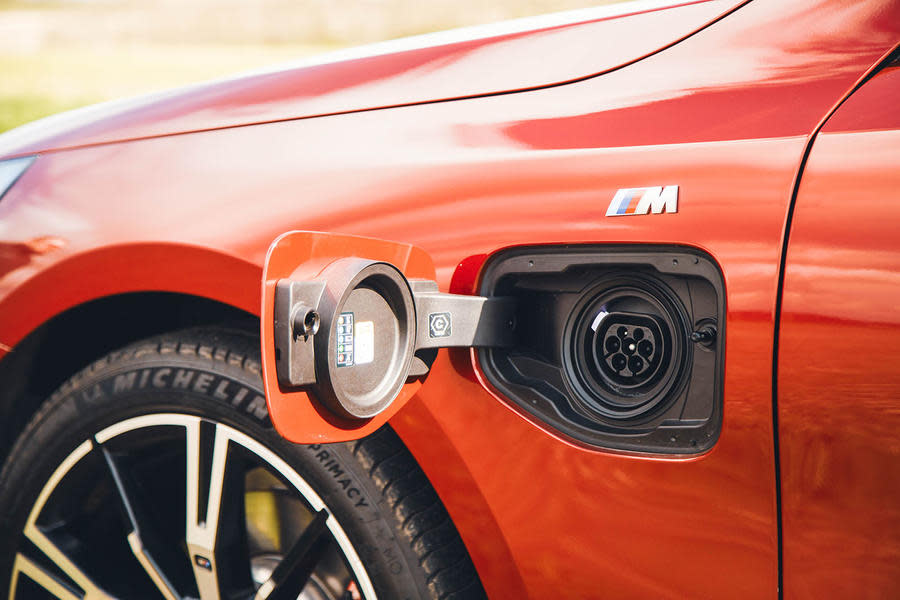

BMW 5 Series vs. Mercedes E-Class: Economic efficiency
Since we’re on the hot topic of PHEV running costs, let’s first make one thing clear: it’s vanishingly unlikely that you’ll achieve the claimed WLTP fuel consumption figures, but an overall fuel consumption figure for a PHEV is meaningless anyway because it depends heavily on how much you can drive on electricity.
What you need to know is the fuel consumption figure when running on electric power (3.0 mpkWh for the Mercedes, 3.3 mpkWh for the BMW) and that both still manage around 40 mpg even when the battery is empty. Knowing roughly how much you use each energy source will also help you calculate running costs.
You don’t have to be an accountant to drive a plug-in hybrid, but it certainly helps.
BMW 5 Series vs. Mercedes E-Class: Driving dynamics
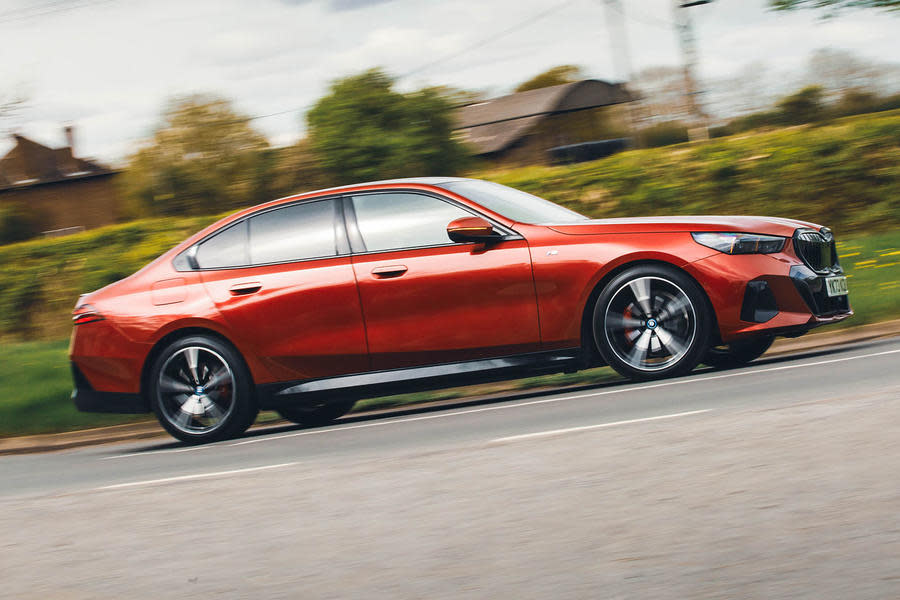

With these numbers in mind, let’s turn to the question of whether these 300-horsepower rear-wheel-drive sedans are still fun to drive. And the short answer is: yes, they can.
It just feels good to sink into the slightly sporty seats of a rear-wheel drive sedan where you’re not sitting elevated on a few centimeters of battery pack.
The BMW’s seats can be lowered even further than the Mercedes’, but both offer a conscious driving position with legs stretched out and a satisfying view over a long bonnet.
Both are also rear-wheel drive only and use it well. They are well balanced, sharpening their cornering lines when you open the throttle and letting you get into a flow on twisty roads, with naturally weighted steering systems that add weight as grip levels change.
Exciting? Despite their 300bhp and respective M Sport/AMG badges, they’re too heavy and, especially in the case of the BMW, too big. The current 5 Series is longer and wider than an E65-generation 7 Series from 20 years ago, and it feels a little dicey driving it down a twisty B-road.
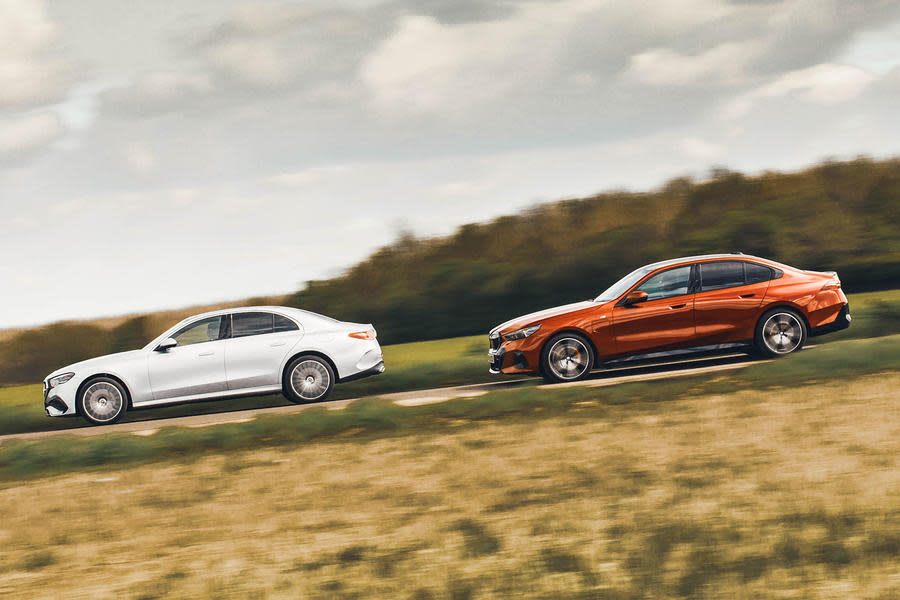

However, as long as you stay away from the narrowest country roads, both models are a real pleasure to drive, with the BMW coming out on top thanks to its slightly tighter body control.
These plug-in hybrids also make pretty good use of their electric power sources. With many PHEVs, you don’t feel like they’re making the full power they should unless you really put your foot on the gas, but these cars can use their electric motors early and often.
It creates the impression of strong thrust without making the petrol engine scream to the rev limit – after all, neither of these 2.0-litre four-cylinders can keep up with the inline sixes of yore. But a combination of acoustic engineering and subtle amplification via the speakers makes both sound smooth and willing.
BMW 5 Series vs. Mercedes E-Class: Driving and handling
In terms of ride quality, both the BMW and Mercedes cry out for adaptive suspension or simply more compliant passive options, although this applies more to the 530e than the E300e.
The 550e with the adaptive suspension is smooth, but the 530e, although well damped, is constantly unsettled with its passive M Sport suspension and it gets quite tiring on the motorway.
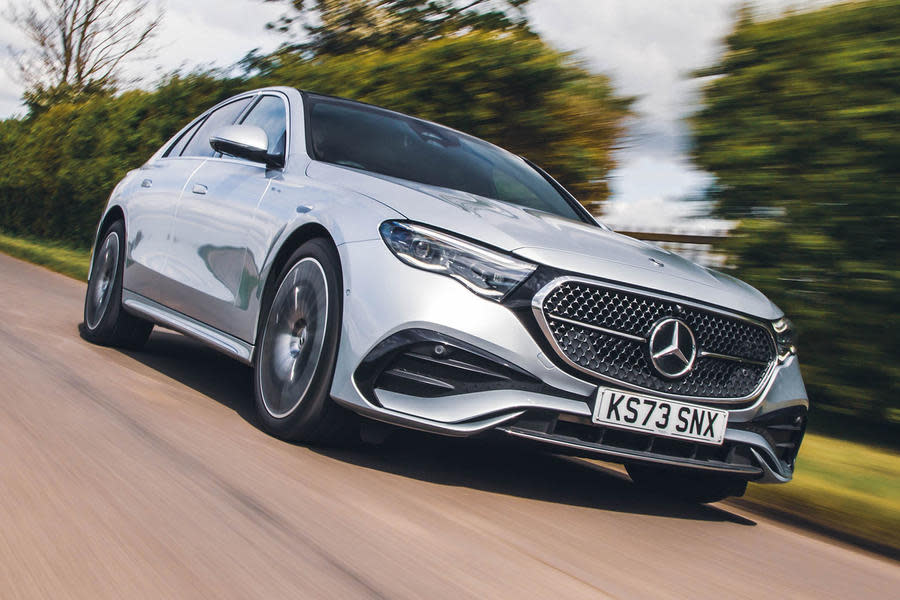

The E-Class feels more ordinary: also a touch too hard and a little bumpy on bad asphalt, but smoother at higher speeds on long journeys.
Be that as it may, the differences between the BMW and Mercedes chassis are ultimately more a matter of nuance than absolute superiority; the differences begin in the interior.
BMW 5 Series vs. Mercedes E-Class: Interior
These cars have always been showcases of technology, and while in 1990 that meant a digital fuel economy display and power seats, in 2024 it means touchscreens – albeit with two different approaches.
BMW retains the iDrive concept with a rotary controller and a few quick-access buttons, which should be easier to use on the go than Mercedes’ wall-sized touchscreen.
While a specific action in the Mercedes only requires two taps, in the BMW many more actions are often required due to the confusing and overloaded menu structure. Want to reset the on-board computer? Good luck.
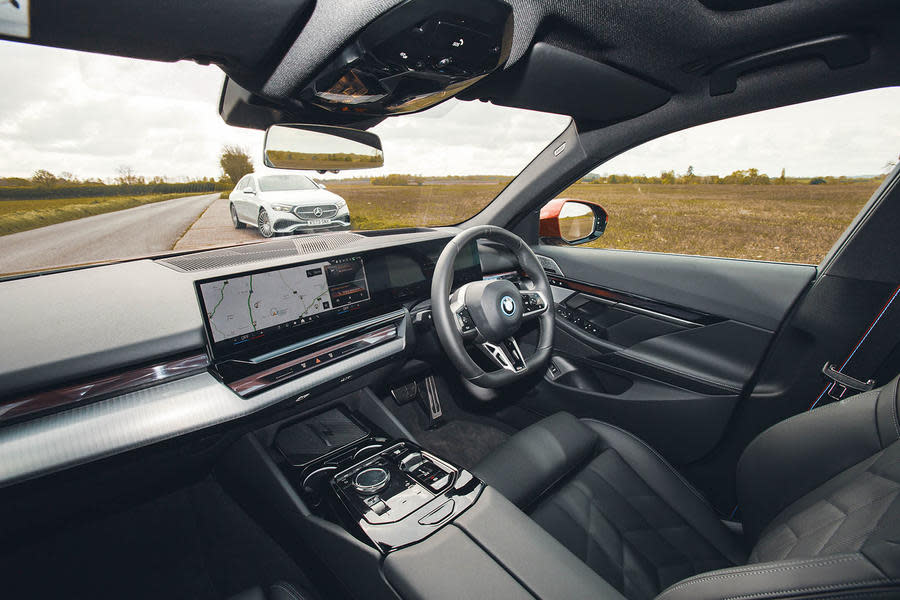

BMW has also completely removed the haptics of the physical controls that still exist, so you have to look down to operate them – and that’s much more distracting than tapping on a screen directly in front of you.
The Mercedes’ control layout is by no means perfect, but I found myself screaming a lot less than I did in the BMW, and overall, not being prone to tantrums is a very desirable feature in a luxury car.
The E-Class scores even higher with the quality of its interior materials. While it seems to be largely bucking the declining standards in Mercedes interiors, the 5 Series seems to be making a start at BMW.
The decorative speaker grilles are made of laser-cut metal on the Mercedes and plastic on the BMW are the most obvious, but the 5 Series’ very plain window switches, the glossy black and clear plastic panels and the insubstantial and plastic-like gear selector switch show that BMW is pursuing a hard cost-cutting course. While the E-Class committed some of these sins, the BMW is even more annoying.
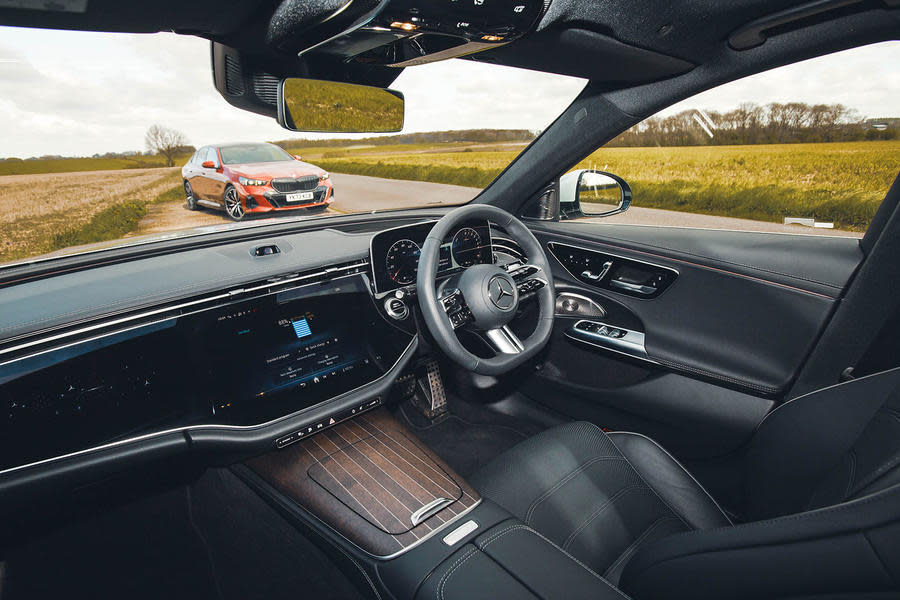

The Mercedes’ interior ambience seems a little more coherent, but in terms of interior space it’s just as bad as the BMW. Both cars take up a lot of space on the road, but from the inside you might wonder where the space has gone.
For a car that’s almost synonymous with taxis, the E-Class’s rear legroom is unspectacular, and in the BMW it’s even worse. It’s baffling that a 6’1″ person can’t sit behind another in this 15′ long car without their knees touching the back of the front seat in front of them.
At least the 530e’s trunk is unaffected, as it’s a plug-in hybrid. The same cannot be said for the E300e, which loses a whopping 170 liters compared to the diesel. You know whether the trunk or the rear legroom is more important to you, but when it comes to overall space utilization, both are losers.
BMW 5 Series vs. Mercedes E-Class: Verdict


Even though plug-in hybrids have come of age in terms of their powertrain, they still have to make compromises in terms of their packaging and handling their considerable curb weight.
So, in the end, both cars are at risk: the Mercedes because it uses a platform designed primarily for petrol and diesel vehicles, and the BMW because it uses a platform that must also accommodate a pure electric vehicle in the form of the i5.
It’s very likely that both cars would be even more pleasant to drive with a 3.0-liter diesel engine and still get 50 miles per gallon without having to plug it in. But that point is moot because the authorities mandated it.
Would they be better as electric cars? Not really with the BMW i5 and Mercedes EQE, but that’s more due to the shortcomings of those particular cars – and the upcoming Audi A6 E-tron could well shake things up.
Hypotheticals aside, these two are a logical choice: good performance and comfort, with (mostly) classy interiors and low running costs – as long as you plug them in. Which one to choose?
The classic “Mercedes comfortable, BMW sporty” verdict doesn’t apply here, as they’re neck and neck in this area. Ultimately, the lower tax will make the Mercedes a little cheaper to run, but more importantly, it feels like the more unified, grown-up car, using its technology in the cabin to ease your journey through navigation or entertainment, but without being too intrusive.
winner
1. Mercedes E-Class
A well-rounded plug-in hybrid with a good balance between driving behavior, handling and range. We vote for better technology and lower taxes.
2. BMW 5 Series
An unusually successful hybrid system that makes the sports sedan surprisingly good, but the ride is too hard and the technology gets on your nerves.
BMW 5 Series vs. Mercedes E-Class: Technical data
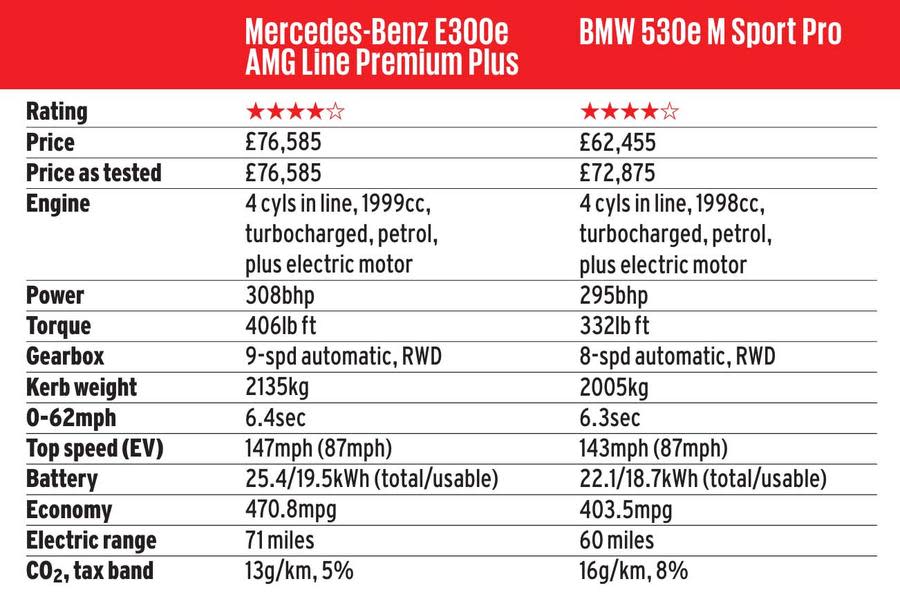

))>



